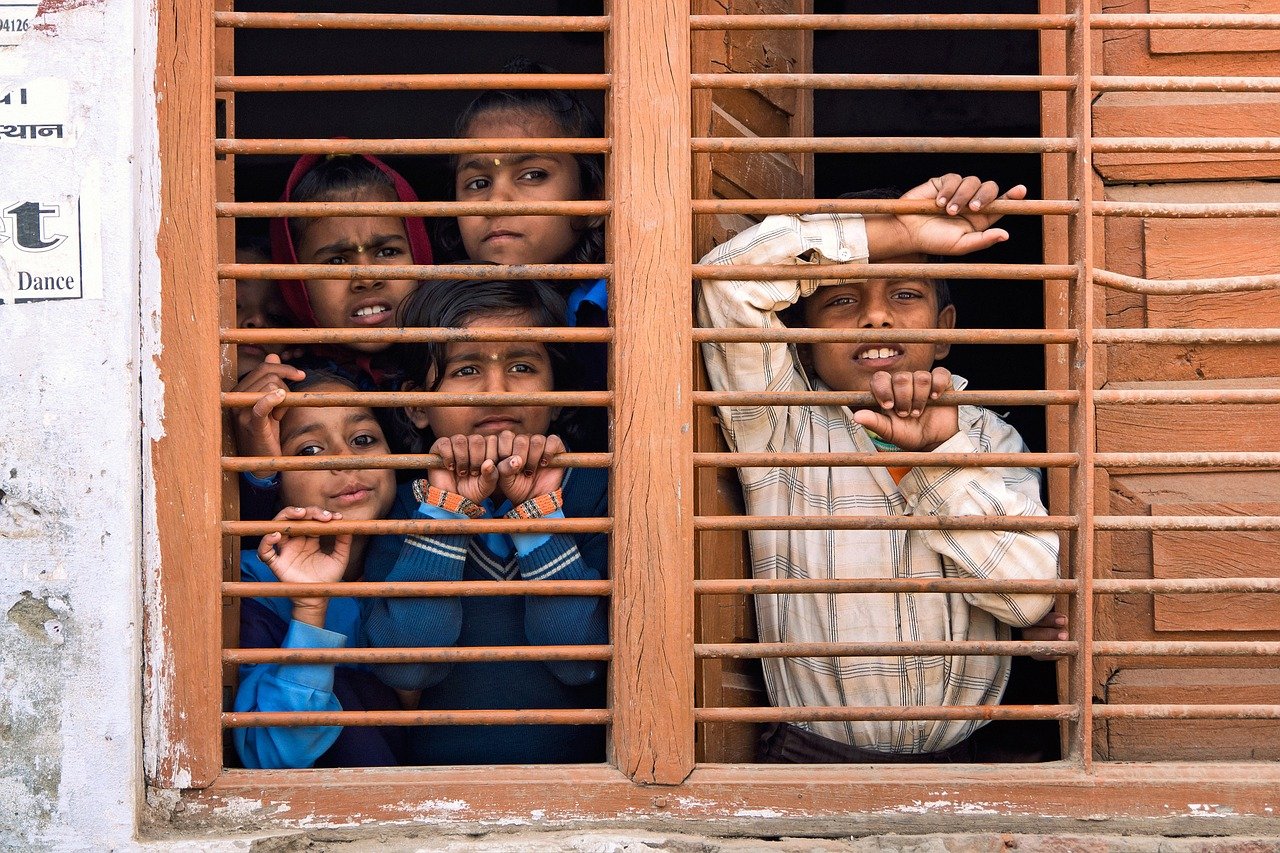COVID-19 has significantly upended the traditional learning process and has impacted students and teachers at all levels. In order to recover lost gains in education, India will have to pursue greater flexibility in its education system and be more open to newer and less traditional solutions.
While the pandemic brought with it an interminable season of closed spaces and minimal in-person interactions, students in India have been propelled into what the World Bank now terms “learning poverty”.
In a traditional school system, there are broadly four major stakeholders: students, teachers, parents, and the government. COVID-19 may have arrived in multiple waves, but the first tsunami that hit the entire Indian education system demanded an immediate course correction – a switch in mechanism and new pedagogical adaptations. While grossly neglected, the contribution of teachers in the pandemic is second only to that of the medical fraternity.
The rapid educational transformation wave found teachers struggling to establish a firm footing in the same space which they once called their second home. Gone was the comfort of the four walls, the musty smell of a classroom reopening after the summers, the hard benches and the soft boards, the call of the morning lark and the first cries of the toddlers as they trotted up the stairs, bag and bottle, wiping off their tear-stained faces.
The new classroom consisted of a 15-18 inch, wi-fi enabled screen, with blocks of single letters for students and a virtual board, with a parent acting as a monitoring system for each child’s activities. Senior teachers who once banked on their juniors to complete minor technological errands now found themselves cautiously keying in email IDs and passwords on the digital platforms they were provided with.
None can undermine the crucial factor of the teacher-parent here. In the absence of a physical classroom and a human in front of them, students aged 4-10 years need far more assistance. This has rendered things further difficult for parents, especially working mothers and single parents who must now teach their children once the online class is over.
Working parents have faced the brunt of having to manage unrealistic work hours with the latest work-from-home setup and a toddler who demands full attention. Now vested with the assistant teacher’s responsibility, parents were forced to reschedule meetings, work hours and even quit jobs in rare cases due to the sheer inability to handle everything.
While unhappy parents seem to believe that teachers aren’t doing enough, the educators on their part lament that the entire rigmarole has been a struggle and a challenge.
Upending the Learning Process
As far as the global learning crisis is concerned, two contradictory examples come from Brazil and Estonia. In Brazil, as per the findings of Instituto Peninsula, 83 percent of teachers felt unprepared to teach remotely, 67 percent were anxious, 38 percent felt tired, and less than 10 percent were happy or satisfied.
The pandemic demanded flexibility, especially when it came to student-teacher interactions. Taking a cue, Estonia gave teachers the autonomy to adjust the curriculum, lesson plans and the time allotted.
There is also the lesser discussed case of newly inducted teachers, who have initiated their careers in a virtual classroom. With no hands-on experience in classroom management, whether they will be able to enter a classroom with the same degree of confidence as novices in the past, remains to be seen.
What can be said with a higher degree of certainty, however, is that they will be able to conduct classes on virtual portals relatively effortlessly. Last year, The Guardian interviewed some beginners who had initiated their careers virtually. Despite a harrowing year, teachers in the UK continue to be optimistic. One of the teachers described the entire experience as “a bit like taking a driving test without ever getting into a car”, making mistakes and recovering from them faster than a regular. She has been well supported by the school and well-planned lessons have sorted most of her issues.
In India, things are distinctly different. Take, for example, Hina Shaikh (name changed), a teacher in one of the premier schools in Pune who had registered for B.Ed. along with her full-time career as a kindergarten teacher. The lessons were unplanned (and ill-suited for online learning), the teachers were working till after midnight, her health dipped, and after a year of a guilty struggle – pulling along for the sake of her students – she finally quit her job.
Hina is one of many such cases. The paucity of good master trainers, lack of technological nurturing from the commencement of their careers, and the unwarranted pressure caused by institutions and organisations that force teachers to work on holidays and weekends, without even the mention of an appraisal, is almost criminal. The overall experience in many cases has left a bitter taste in the mouth of educators.
Indian children, especially those who entered preparatory school in the last two years, have lost out on a significant part of their school lives. In the wake of an unrelenting pandemic, the fear that lurks at the back of the mind of every parent and teacher is: “Will this become a permanent part of life?” In India, there is a high impossibility that this could happen, but for countries in the West, adaptability seems to have come effortlessly, given that their technological advancement has always been a notch higher than that of the developing countries.
Way Forward
With India suffering a stark digital divide, perhaps it is time for schools to adopt a dual approach, giving teachers and students the choice to decide whether they want to teach and study online in the long run too. This will create two parallel systems and incur significant maintenance costs; but given the current situation, all in all, this approach seems to be a safe bet for an otherwise bleak educational future.
Since India has multiple educational boards in place – state boards, ICSE, IB and CBSE to name a few – there is a good chance that, with schools that cater to the niche class and the attitude of overprotective parents who are willing to pay to have their children educated at home, many would opt for pure online education or even a hybrid model.
Additionally, due to the increase in fuel prices and the time taken to travel to off-beat locations, teachers would also find it easier to sit at home and conduct their classes. With exams also going online, it just becomes an added incentive.
In many top colleges, over half the students come from outside the state. In such cases, students save on overhead costs, rent, travel and shifting of homes if online education is offered. An added benefit is that students will finally have some time to focus on honing their soft skills, their language and their ideating.
Another important idea that is making headway is self-paced learning, which could play a key role in the lives of working professionals who would like to continue their studies.
However, not all students in India can afford a laptop and wi-fi, in addition to the tuition cost.
That brings us to yet another question: Can India now encourage more home-schooling? Again, this is a matter of privilege. In Texas, for example, many parents opted out of the traditional system once the pandemic upended campus learning. But such privileges are rare in India. In case the parent is educated, unemployed and willing, home-schooling could be a strong possibility; but, in families where family members are uneducated, the student has no option but to ensure that he finds a way to some school.
COVID-19 has brought with it a newly identified anxiety in the entire teaching community. The government has only provided some financial relief and the cancellation of various exams.
Contrary to public perception, the cancellation of exams does not help, because this means that the effectiveness of virtual classroom learning is still under question. Students not giving an exam is only a precursor to the introduction of a failing class of graduates in the near future who are probably unsure of their core field of study. So, while online classes may prove beneficial in a limited way for students aged 10-14 years, they will need to get back to regular in-person classes, unless they have to migrate out of their state altogether. Here, the fee structures for both modes will play a critical role and will be a deciding factor in what students opt for.
India must acknowledge the compelling need for stronger and inexpensive internet services, and make digital devices and technology freely available for all, irrespective of class or status. B.Ed. programs should focus on qualitative learning backed by technology, rather than just four years of quantitative learning and theory. There must be a special subject on Mental Health and Educators, as a mandatory part of B.Ed. programmes, which focuses on how teachers can continue to work under adverse circumstances.
The truth is that while the pandemic may have impaired our movement, it has also fixed our vision. As Plutarch once wrote, “The mind is not a vessel to be filled, but a fire to be kindled.” For young minds to be filled, the ones grooming them must possess the perfect headspace, heart space and the capacity to ignite the burning desire for knowledge and learning. Our teachers deserve better. Our teachers deserve more.
While the future is uncertain, one must be cautiously optimistic and be more open to having multiple working solutions on the table rather than focusing on the problem. At least our quest for a good vaccine taught us all this much.
Katherine Abraham has completed her MA LLB, MBA and is currently pursuing her second Master's degree in Political Science. She is the author of Every Sunset Has a Story and The Rice Bag's Argument. She is an international freelance journalist (INS), public speaker, teacher and international photographer.


